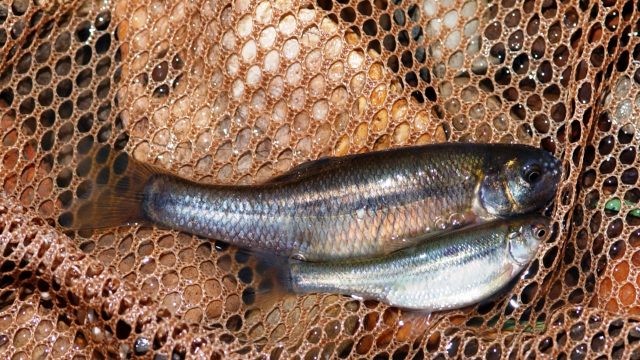Doug Leier: Think About Your Bait

In 1988 I was a sophomore in high school, I was more than happy to catch a few perch, walleye or northern pike, and sometimes even bullheads.
It seems I never had a problem finding the yellow-bellied, numerous-yet-undesirable fish, even when the number of fishing waters was half what it is now.
At that age I really didn’t quite understand the drought that was occurring in North Dakota, and the low water conditions that would linger for several years to follow. By today’s standards it seemed like a dire time for fisheries in the state, yet Dale Henegar, commissioner of the North Dakota Game and Fish Department, was upbeat in his April 1988 column in North Dakota OUTDOORS magazine, stating: “Our fisheries management program has created numerous opportunities that didn’t exist 50 years ago. We’ve more waters to fish and more fish to catch.”
And that was with 168 managed fishing waters in the state.
Less than 10 years later, current Game and Fish Director Terry Steinwand led the fisheries division, and in 1997 the number of waters holding fishable populations had increased to 275 during the beginning of a long-term wet cycle that is still ongoing.
A few years ago the number of fishing waters had grown to 325 and now, Greg Power, the current fisheries division chief, tabs the total at approximately 420. Nobody can accurately predict if we’ll add even more in coming years.
Plain and simple there’s more water and more places to fish.
But good fishing today isn’t only a function of Mother Nature over the past 20 years.
During the drought period 25 years ago, many North Dakota lakes were plagued with undesirable fish species like carp, bullheads, white suckers and in some cases stunted perch. These undesirable species were often a result of anglers simply discarding bait after they were done fishing, even though it was and still is illegal to release baitfish into any North Dakota waters.
In an effort to greatly reduce or eliminate this bait-bucket transfer of unwanted fish species into state waters, Game and Fish began a long-term program that has included numerous changes to tighten bait regulations, along with chemical renovations of numerous lakes where the fishery was dominated by unwanted species.
Today, fathead minnows, sticklebacks, and creek chubs are the only legal live baitfish species that can be used in most North Dakota waters. The exceptions are the Red and Bois de Sioux rivers where white suckers can be used and 23 state waters where it is illegal to use any live baitfish.
Eliminating white suckers as legal baitfish over much of the state has greatly reduced the number of lakes that have developed problem sucker populations since the late 1980s, according to Power.
In addition, for the past couple of decades, the department has worked with the wholesale and retail bait industry to help ensure that the bait anglers are buying is clean and legal and doesn’t contain any stray species that might be harmful to a lake if they were inadvertently released.
While today’s bait is much cleaner than what may have been purchased 20 years ago, Power said it remains the angler’s responsibility to possess only legal live baitfish when fishing in North Dakota.
For specific regulations regarding bait use and all other fishing regulations, refer to the 2014-16 North Dakota Fishing Guide.




